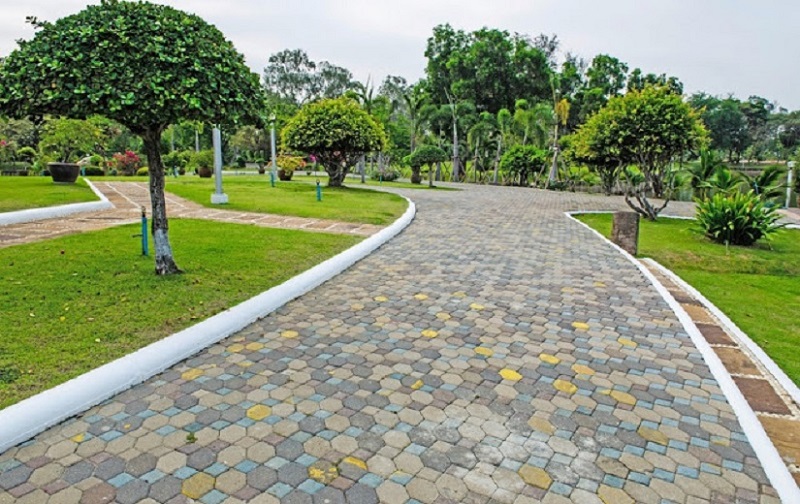Landscaping is a popular method of systemically transforming the look of your garden. Multiple landscape design styles differ in terms of space utilization, use of materials, and features. The design should be able to compliment the architecture of your house and the surroundings. The key elements considered for landscape designing are line, mass, form, texture, and colour. Each element is a crucial aspect in the design which fulfills a specific purpose in the landscape.

Some of the excellent landscape design ideas have been discussed here:
Formal or Regular
The formal or regular landscape design is defined by perfect geometry. The pathways or the boundaries of flower beds or Fences are either laid down in a straight line or have classic geometric shapes such as circle, axial, elliptical, etc. In this type of landscape, the trees are positioned in a perfectly organized manner instead of a random pattern. The flowerpots are arranged symmetrically to contribute to the essence of visual equilibrium in the appearance of the garden. This type of landscape design style is suitable for homes having classical architecture. Regular pruning is an essential requirement in such a landscape.
Japanese
Japanese landscape design style is all about incorporating natural elements because this design derives inspiration from Buddhist and Taoist wisdom, which focus on harmony with nature. Asymmetry is a significant feature of the Japanese landscape. It means the walkways, boundaries, and edges of patios should not be in sync with any regular geometrical shape and must have a plethora of imperfect shapes. Natural stones and gravel must be used to pave the walkways and edges of patios. Evergreen green trees of various sizes and species also form an essential trait of the Japanese landscape. The water element of this landscape design includes a stone basin, waterfall, and bamboo waterspout. Bamboo fencing is recommended for the Japanese landscape garden.
English
English landscape design style displays both symmetrical formal and irregular elements. This landscape style requires gently winding pathways with tree groves interspersed all over the landscape. Stone benches and colonial architectural elements such as statues, columns, or walls also recreate an aura of traditional English garden. A lake having an irregular border to resemble a natural lake is an essential feature of this landscape design. English landscape style is suited for large spaces. But it can also be implemented in small residential properties bas well. There is no need to create a large lake. Instead, a small pond can be added to incorporate the water element. Tree groves can also be replaced with small groups of trees.
Spanish
The Spanish landscape design is suitable for gardens located in hot and dry areas. Symmetrical pathways and flower beds showcase the central theme of this design. In this type of landscape, instead of a single large central fountain, multiple small-sized fountains are found to have installed in a scattered way throughout the garden. Reflecting pools having geometric shapes form another essential element of the Spanish landscape. Walled off patio areas and the use of ceramic tiles are typical design features of the Spanish landscape.
Mediterranean
Mediterranean landscape design is common in coastal areas of France, Italy, and Spain. This type of design creates a relaxing environment. This design’s significant elements include a running water pond or tiered fountain with cascade of water rushing through the stairs, terra cotta pots, Roman columns, light-coloured walls, and tiles. Trees of various textures and colours such as Cypress, Olive, Lavender, Bougainvillea, and Juniper are essential floral elements of this landscape design style. A shaded seating area and gravel pathways must also be incorporated to make a Mediterranean landscape.
Conclusion
A professional landscaper provides expert advice regarding the correct landscape design style in the light of the topography of your garden, design of your house, and other factors. The professional landscape designer will also help with the selection of the right plants and other design elements.





